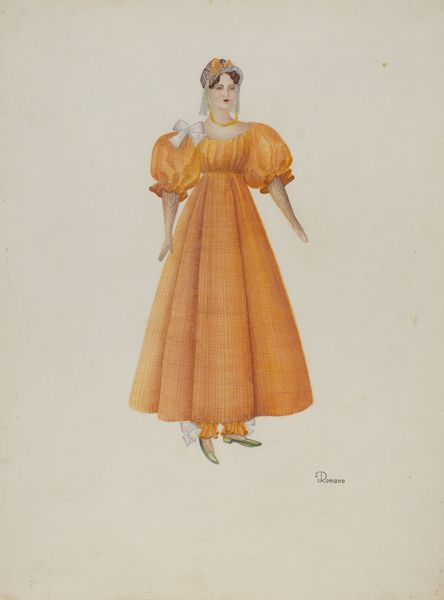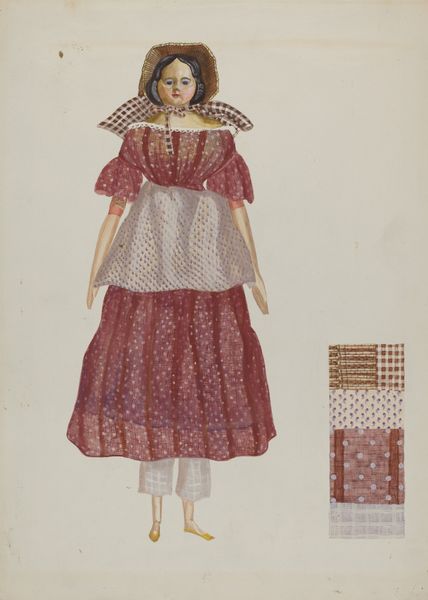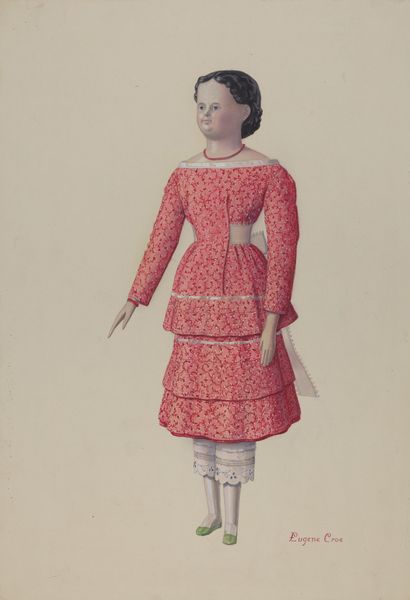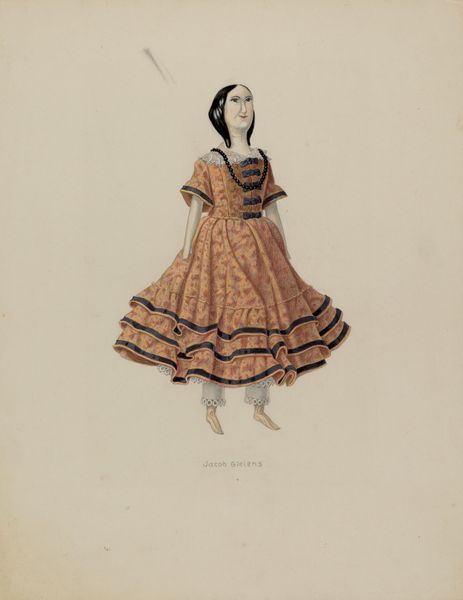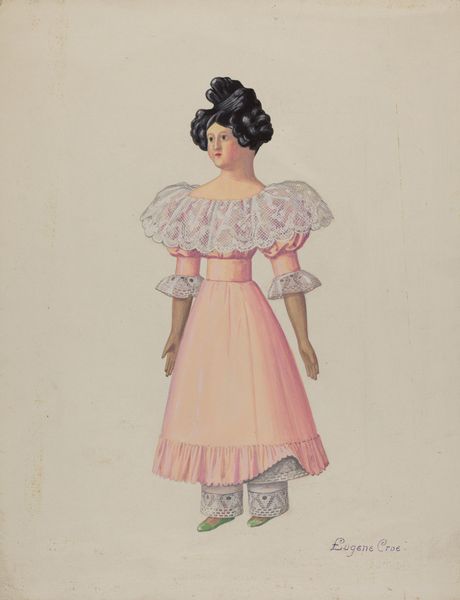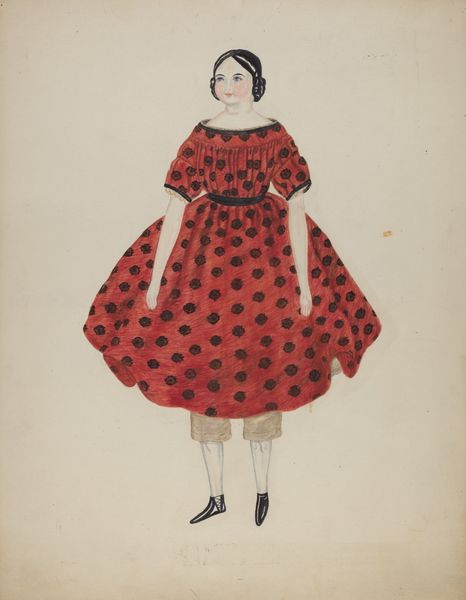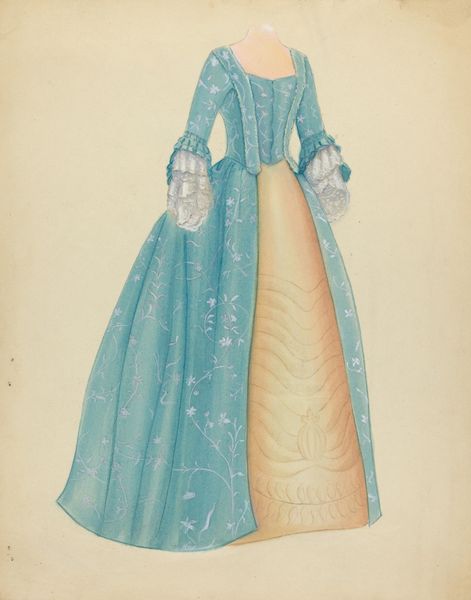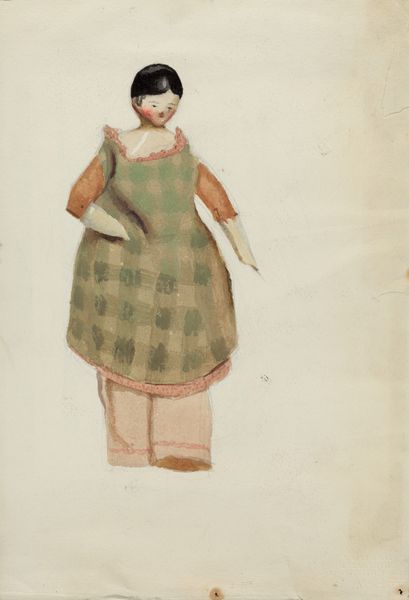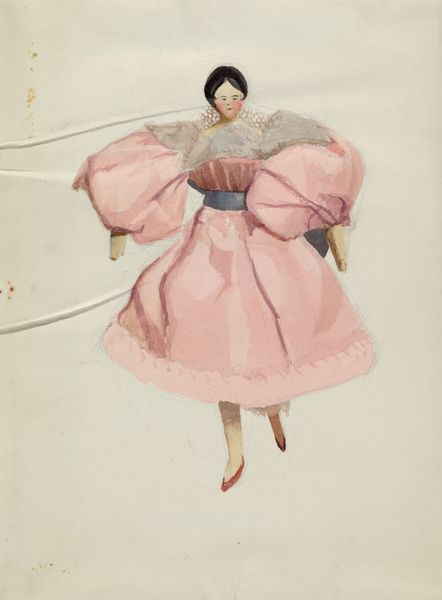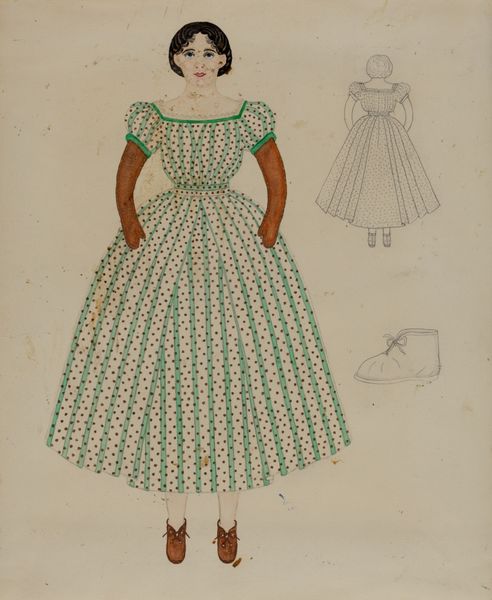
drawing, watercolor
#
portrait
#
drawing
#
figuration
#
watercolor
#
historical fashion
#
asian style outfit
#
watercolour illustration
#
genre-painting
#
academic-art
#
fashion sketch
#
watercolor
Dimensions: overall: 35.7 x 26.7 cm (14 1/16 x 10 1/2 in.) Original IAD Object: 22 1/2" long
Copyright: National Gallery of Art: CC0 1.0
Curator: Welcome. We're looking at "Doll", a watercolor drawing by Josephine C. Romano, created sometime between 1935 and 1942. Editor: It has a somewhat haunting feel to it, doesn’t it? The doll’s vacant stare and stiff posture are unsettling. It's presented like a fashion sketch, yet there is something about this that feels different from commerce, and more like longing. Curator: Indeed. Romano’s artwork often explores the intersection of genre-painting and academic-art. This work might be referencing historical fashion through an Asian-inspired design for the doll's dress. What is truly intriguing is the potential cultural significance of such stylized pieces at this historical moment. Editor: Absolutely, it makes you wonder about the politics of representation. This piece emerges during a period of widespread xenophobia, particularly in the face of Japanese expansion in Asia and, with the use of historical fashion through an Asian inspired lens, asks critical questions about identity and perception in the United States. Is Romano simply observing beauty in a doll, or subtly engaging with racial discourse of her time? Curator: The formal choices also intrigue me; the application of watercolor is meticulous, producing fine details within the patterned dress and the doll's facial features. But notice also the simplification in areas. This highlights the interplay between traditional art styles and a modernist inclination. The artwork straddles representation, asking the question whether the material presentation elevates or abstracts the piece. Editor: The scale and medium also add to its emotional power. A watercolour illustration conveys a kind of delicate vulnerability. Consider too that this object exists as a "doll," suggesting themes related to innocence, but also mimicry. Curator: Ultimately, the painting resists a singular reading. It encapsulates art's capacity to both reflect and subtly subvert dominant cultural narratives, inviting speculation on representation and the complex sociopolitical landscapes of the mid-20th century. Editor: Precisely. This "Doll" is not merely an aesthetic rendering but a portal into thinking about broader concerns of how people are seen and understood in society during wartime.
Comments
No comments
Be the first to comment and join the conversation on the ultimate creative platform.
